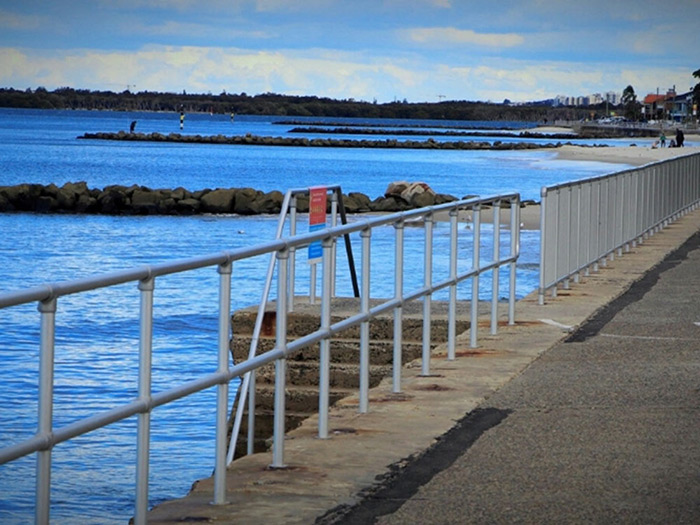Historically dominated by steel, the handrail and balustrade industry has been experiencing a shift towards aluminium. With its impressive combination of strength, durability, and versatility, aluminium is rapidly becoming a preferred material for architects, engineers, and builders alike.
Aluminium is lightweight and strong
At the heart of aluminium’s appeal is its exceptional strength-to-weight ratio. Approximately one-third the weight of steel, aluminium significantly reduces loadbearing pressures without compromising structural integrity. This makes it an ideal choice for elevated structures where weight considerations are paramount.
Aluminium has a natural corrosion resistance
Beyond its structural advantages, aluminium offers great durability due to its natural resistance to corrosion. Upon exposure to oxygen in the atmosphere, aluminium naturally forms a thin surface layer of aluminium oxide that acts as a shield against further oxidisation, rust and decay. While choosing the best materials for outdoor handrails can be overwhelming, this inherent protection makes aluminium exceptionally long-lasting, especially in harsh environments such as coastal regions, water treatment plants or other industrial settings.
Aluminium is a low maintenance material
Aluminium’s outstanding corrosion resistance means that it requires less maintenance than steel and galvanised products, which translates into significant cost savings over the product’s lifespan. This is particularly advantageous for installations in regional and remote areas, or where access for maintenance is difficult, time consuming or problematic.

Aluminium allows for fast installation
There are also a range of benefits that will resonate with project managers. Aluminium’s versatility is another key factor driving its popularity. Its lightweight and modular design allows for swift and efficient installation, often by a single person. This is especially beneficial in confined spaces or when working against tight deadlines. Furthermore, aluminium’s malleability enables on-site modifications without compromising structural integrity, providing flexibility during the construction process.
Lower carbon aluminium products on the rise
As a highly recyclable material, aluminium also aligns with sustainable building practices. By choosing aluminium for handrails and balustrades, you contribute to a reduced environmental impact. Not only this, but Australia’s construction industry is seeing a recent shift to a lower carbon aluminium alternative, now starting to be offered locally through local extruders and fabricators.
Lower carbon aluminium has a lower embodied carbon content compared to current global benchmarks. While there’s no set number of carbon intensity that defines low carbon aluminium, the target range is from anything below the Australian average of about 12kgs Co2/kg of aluminium to about 4kgs Co2/kg. Did you know Moddex is transitioning to locally sourced, lower carbon aluminium from Capral Aluminium?
In conclusion, aluminium’s unique blend of strength, durability, cost-efficiency, and sustainability makes it the modern choice for handrails and balustrades. Whether you’re an architect seeking innovative solutions or a builder prioritising efficiency, aluminium offers a compelling alternative to traditional materials.
If you’d like to know more about Moddex aluminium handrails and balustrades, and experience the benefits of set-and-forget installations with less demanding maintenance at a comparable cost to traditional steel product, please speak with our expert team.

